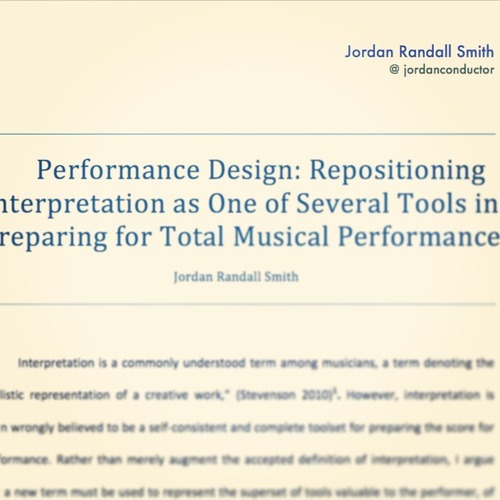I am currently working on a concept I call
Performance Design. It’s an idea that builds on top of the art of interpretation and takes into consideration the many other layers of performance with which performers seem not to generally concern themselves. This includes considering audience perception, which I believe is perhaps the single most fruitful plain that we as musicians regularly fail to cultivate. It also considers a range of alternate ways to look at programming, venue selection, and even marketing and recording. Here’s a short excerpt of a larger paper (perhaps one day a book) I'm writing on the topic:
Interpretation is a commonly understood term among musicians, a term denoting the “stylistic representation of a creative work." However, interpretation is often wrongly believed to be a self-consistent and complete toolset for preparing the score for performance. Rather than merely augment the accepted definition of interpretation, I propose that a new term must be used to represent the superset of tools valuable to the performer, of which the traditional methods of interpretation are a subset.
I argue for the use of the term Performance Design (PD) to indicate the totality of means and methods by which live concert performances are planned and prepared. Included in these means are tools from Neuroscience, Information Theory, and other audience-centric disciplines.
 |
| "Performance Desing: Repositioning Interpretation as One of Several Tools in Preparing for Total Musical Performance" by Jordan Randall Smith |

No comments:
Post a Comment